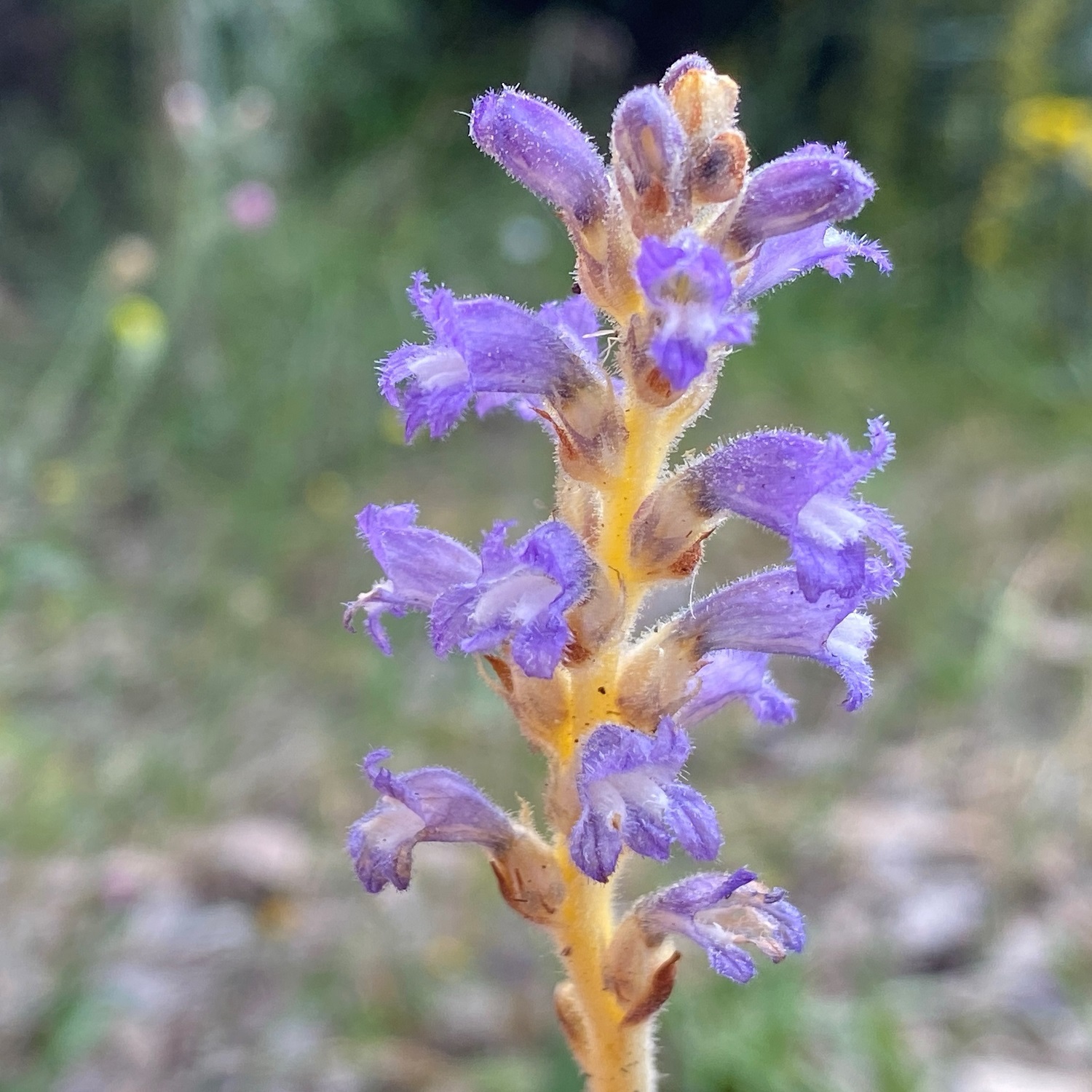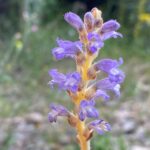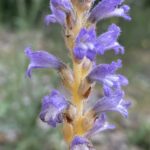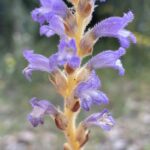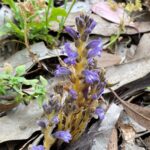Οροβάγχη η διακλαδούμενη
Etymology of Orobanche ramosa
The name of the genus, "Orobanche", derives from Ancient Greek "ὀροβάγχη", from "ὄροβος" [orovos] meaning "vetch" and the verb "ἄγχω" [ancho] meaning "throttle", hence "the vetch throttler", referring to the effect the Orobanche have on their hosts, as they are aggressive root-parasitic weeds exploiting other plants for water, assimilates, and nutrients from their roots.
The specific epithet, ramosa, is a Latin adjective derived from ramus, meaning "branch." The feminine form ramosa is used to agree with the feminine gender of the genus name Orobanche. Therefore, ramosa translates to "branched" or "having many branches." This part of the name directly refers to the characteristic branching habit of this particular Orobanche species, distinguishing it from species that have unbranched stems.
The Orobanche genus in Cyprus
It is estimated that around 14 Orobanche taxa (13 species and 1 subspecies) exist in Cyprus.
Orobanche ramosa in Cyprus
Orobanche ramosa appears up to an altitude of 350 metres in Cyprus. Its flowering period is usually between February and April
How to identify Orobanche ramosa
Orobanche ramosa, Orobanche aegyptiaca, and Orobanche mutelii look very similar. Their identification can be challenging due to their parasitic nature, leading to reduced vegetative parts and significant morphological variability influenced by the host plant. These three species are closely related and are often grouped in the section Tryonichon, sometimes treated under the genus Phelipanche. They are all obligate root parasites lacking chlorophyll. Here is a detailed comparison of their key differences:
Orobanche ramosa (Branched Broomrape)
General Appearance and Height
Orobanche ramosa is typically a slender plant, usually branched, particularly from the base. Its height commonly ranges from 10 to 60 centimeters, though specimens can be smaller.
Stem
The stem is usually pale yellowish and covered with glandular hairs. It is characteristically branched, with multiple flowering stems arising from the base or lower part of the plant.
Inflorescence
The flowers are arranged in a lax to dense spike or raceme, occupying a significant portion of the upper stem.
Bracts and Bracteoles
Each flower is subtended by a single bract. Crucially, Orobanche ramosa (like O. aegyptiaca and O. mutelii) possesses two bracteoles attached at the base of the calyx, distinguishing this group from other Orobanche species. The bracts are typically ovate-lanceolate.
Calyx
The calyx is usually 6-8 mm long and is deeply divided into two segments, each typically with two teeth (making a total of four teeth for the calyx). The teeth are usually acuminate (tapering to a point). Glandular hairs are present on the calyx.
Corolla
The corolla is tubular, inflated at the base, and then widens into a somewhat funnel shape. It is typically 10-22 mm long. The color is usually pale to bright blue or violet, often with a whitish or yellowish throat. The corolla is glandular-pubescent (covered in glandular hairs). The upper lip is generally erect or slightly curved forward, and the lower lip is usually 3-lobed, with the lobes often somewhat rounded or obtuse.
Stamens and Anthers
The filaments (stalks supporting the anthers) are inserted 3-6 mm above the base of the corolla tube. The anthers (pollen-bearing parts) can be glabrous (hairless) or sparsely hairy, particularly on the sutures at the base.
Stigma: The stigma (the receptive tip of the pistil) is typically white, cream, or pale blue and often obscurely lobed.
Host Plants
Orobanche ramosa has a wide host range, parasitizing numerous dicotyledonous plants, including economically important crops such as tomato, potato, tobacco, eggplant, legumes (like faba bean and pea), and various vegetables and weeds.
Distribution
It has a broad natural distribution across the Mediterranean region, Europe, Asia, and Africa, and has been introduced to other parts of the world, often as a serious agricultural weed.
Summary of key differences of Orobache ramosa, aegyptiaca, and mutelii
In summary, while all three species share the characteristic of having branched stems (though less consistently branched in O. aegyptiaca) and flowers with both bracts and bracteoles, the key features for differentiation lie in the corolla length (O. aegyptiaca generally having the longest flowers), the hairiness of the anthers (O. aegyptiaca typically having densely hairy anthers while O. ramosa and O. mutelii have glabrous or sparsely hairy anthers), the insertion point of the stamens in the corolla tube (O. aegyptiaca lower than the other two), and potentially subtle differences in calyx teeth shape and corolla lobe shape. However, due to the inherent variability, especially influenced by the host plant, identification based solely on these morphological characters can be difficult, and some specimens may be hard to assign to a specific species without detailed examination or genetic analysis.
